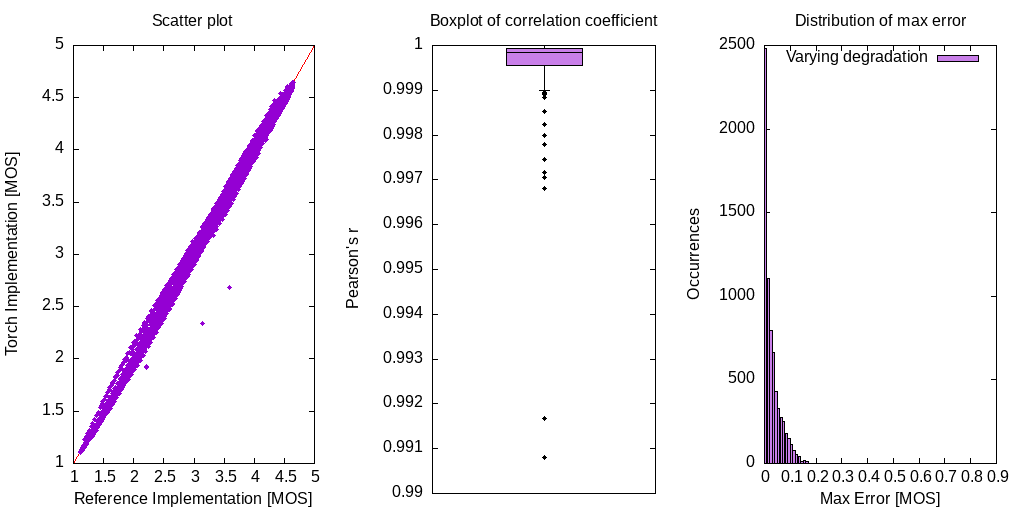Implementation of the widely used Perceptual Evaluation of Speech Quality (PESQ) score as a torch loss function. The PESQ loss alone performs not good for noise suppression, instead combine with scale invariant SDR. For more information see 1,2.
To install the package just run:
$ pip install torch-pesqimport torch
from torch_pesq import PesqLoss
pesq = PesqLoss(0.5,
sample_rate=44100,
)
mos = pesq.mos(reference, degraded)
loss = pesq(reference, degraded)
print(mos, loss)
loss.backward()The following figures uses samples from the VCTK 1 speech and DEMAND 2 noise dataset with varying mixing factors. They illustrate correlation and maximum error between the reference and torch implementation:
The difference is a result from missing time alignment implementation and a level alignment done with IIR filtering instead of a frequency weighting. They are minor and should not be significant when used as a loss function. There are two outliers which may degrade results and further investigation is needed to find the source of difference.
Validation results for fullband noise suppression:
- Noise estimator: Recurrent SRU with soft masking. 8 layers, width of 512 result in ~1586k parameters of the unpruned model.
- STFT for signal coding: 512 window length, 50% overlap, hamming window
- Mel filterbank with 32 Mel features
The baseline system uses L1 time domain loss. Combining the PESQ loss function together with scale invariant SDR gives improvement of ~0.1MOS for PESQ and slight improvements in speech distortions, as well as a more stable training progression. Horizontal lines indicate the score of noisy speech.
- End-to-End Multi-Task Denoising for joint SDR and PESQ Optimization
- A Deep Learning Loss Function Based on the Perceptual Evaluation of the Speech Quality
- P.862 : Perceptual evaluation of speech quality (PESQ)
- Perceptual evaluation of speech quality (PESQ)-a new method for speech quality assessment of telephone networks and codecs
- CSTR VCTK Corpus: English Multi-speaker Corpus for CSTR Voice Cloning Toolkit
- The Diverse Environments Multi-channel Acoustic Noise Database (DEMAND): A database of multichannel environmental noise recordings
